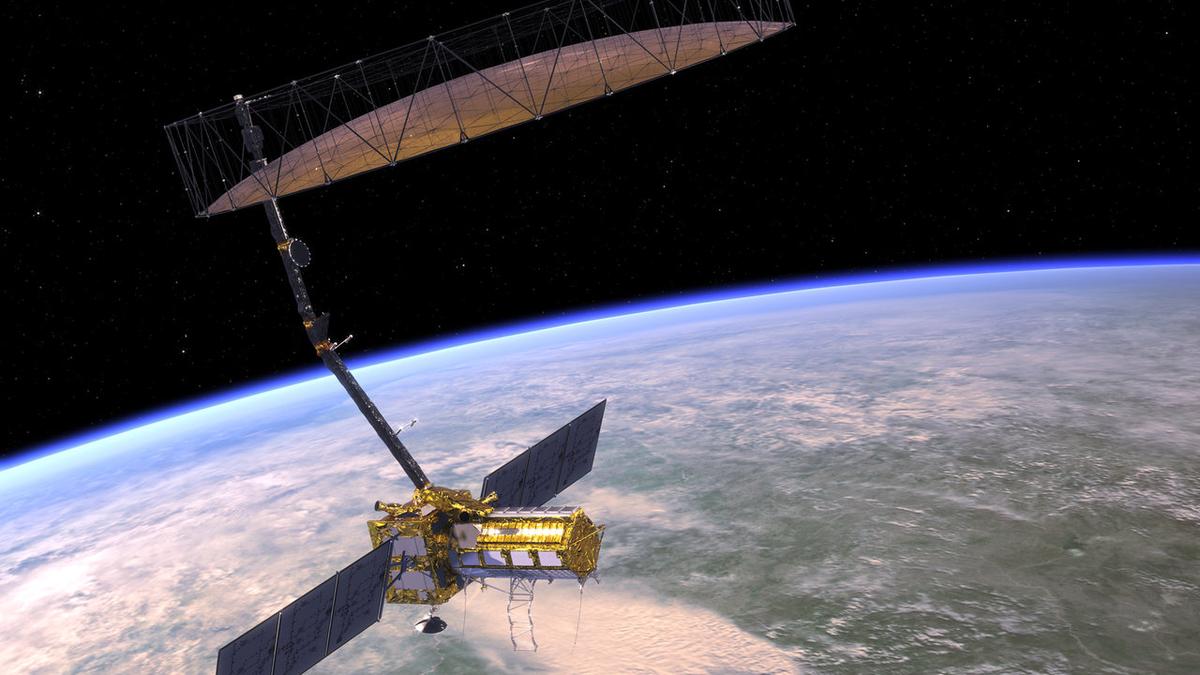An artist’s concept of the NISAR satellite in earth orbit. The radar antenna reflector is deployed on top.
| Photo Credit: NASA
Synthetic aperture radar (SAR) is a way to make sharp pictures even when it’s dark or cloudy. Instead of using visible light like a regular camera, SAR systems send out microwave pulses and record the echoes that bounce back from the ground, ocean, ice or buildings. Then, clever signal processing turns those echoes into detailed images.
The key element is the antenna that receives the echoes. Usually, the longer a physical antenna, the better the resolution — but a large antenna is hard to build and maintain. On a SAR, a small antenna is carried on a moving platform like a satellite. As a result each echo is recorded at a slightly different position. By stitching them together with precise timing and phase information, software can help mimic a single antenna hundreds of metres long.
Since microwaves penetrate clouds, smoke, and even light rainfall, SAR can collect data 24/7. If a SAR unit is mounted on an orbiting satellite, it can map swaths of land hundreds of kilometres wide in a single overpass. Different materials like soil, vegetation, water, and metals reflect microwaves differently, allowing SAR to detect changes invisible to optical sensors.
On June 12, NASA said the NASA-ISRO SAR (NISAR) mission had arrived at ISRO’s spaceport in Sriharikota. Once it’s launched, NISAR will “scan nearly all of earth’s land and ice surfaces twice every 12 days”, providing “an unprecedented amount of information about our planet’s environment”.
Published – June 17, 2025 08:37 am IST
